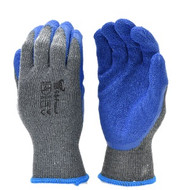Key Features of Coated Work Gloves for Hand Safety
Jun 8th 2023
Coated work gloves provide distinct advantages over standard gloves in terms of hand protection. In this article, we will go over less well-known distinguishing characteristics that make coated gloves a desirable option in a variety of industries.
Advanced Coating Technologies
Advanced coating technologies are what set coated gloves apart from regular gloves. Manufacturers use cutting-edge methods to add coatings, such as foam, sand finish, or micro-dots, to improve grip, dexterity, and tactile sensitivity. These customized coatings are created for particular jobs and sectors. Foam coatings, for instance, offer superior impact protection and cushioning, making them perfect for handling fragile goods. Sand finish coatings produce a rough texture for improved grip in greasy or wet conditions. When it comes to functionality and adaptability, coated work gloves benefit greatly from these technologies.

Seamless Design
The seamless design of coated gloves generally contributes to their greater fit and comfort. The fingertips and palm don't have seams, so there are no weak spots and fewer chances of tearing or snagging. Additionally improving dexterity and enabling more delicate and precise hand movements is its seamless design. Normal gloves, on the other hand, may feature seams that impede movement, decrease durability, or both. Coated work gloves' seamless design guarantees a tight fit and lowers the chance of irritation, allowing workers to complete jobs quickly and efficiently.

Breathability and Moisture Control
Coated work gloves usually feature breathable components and construction that place a high priority on moisture control. Coated glove liners are frequently made to drain away moisture and encourage ventilation, which helps to lessen sweat buildup and enhance comfort. This characteristic is crucial when working in warm settings or in physically demanding jobs. Normal gloves lack these moisture management characteristics, which can make them uncomfortable, reduce productivity, and even pose health risks. Coated gloves are more comfortable to wear for longer periods of time because of the breathability and moisture management they provide, ensuring the best hand protection without compromising comfort.

Conclusion
Coated work gloves provide advantages over uncoated ones beyond improved grip, hazard protection, and durability, which are all widely acknowledged. Coated gloves are a superior option for industries that need accuracy, comfort, and longer hand protection due to specialized coating technologies, seamless construction, improved breathability, and moisture management. By being aware of these variations, employees and employers can choose the best work gloves for their unique tasks and circumstances.

